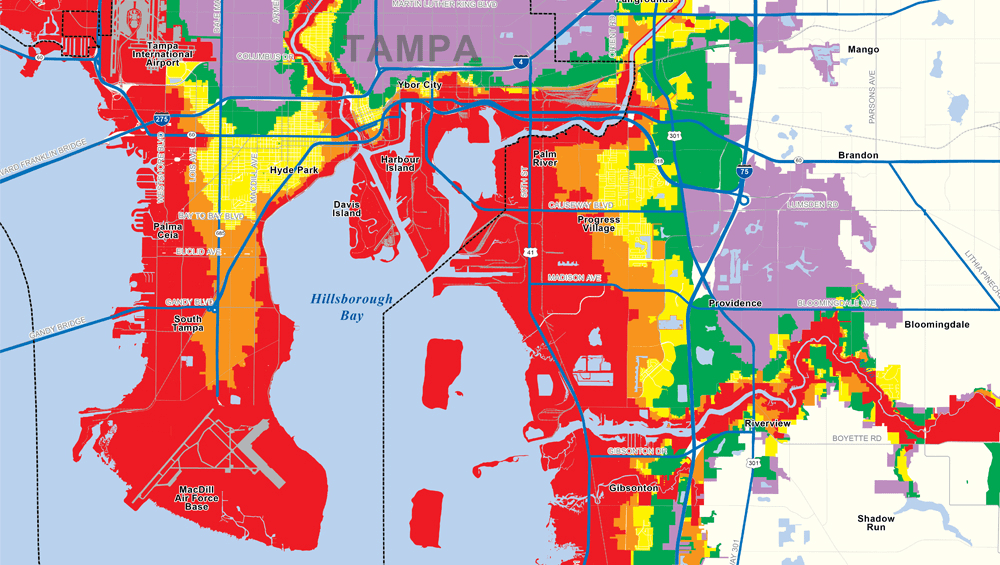Florida Emergency Management's Response to Hurricane Milton: Resources and Guidelines
As the impacts of climate change continue to escalate, Florida finds itself increasingly vulnerable to hurricanes. Each storm reveals the need for robust preparedness and a well-coordinated response strategy. Recently, Hurricane Milton has tested the limits of our state’s emergency management systems. In an effort to provide insight into Florida's response to this formidable storm, we will explore the roles of the Florida Department of Emergency Management, available resources, and key guidelines for residents.
Understanding the Florida Emergency Management Framework
The Florida Department of Emergency Management (FDEM) is the state’s primary agency for managing disaster preparedness, response, recovery, and mitigation. During the severe weather season, especially when hurricanes threaten our coastline, FDEM collaborates with local governments, federal agencies, and volunteer organizations to streamline recovery efforts and offer assistance to residents.
The state operates under a comprehensive Emergency Management Plan, which is triggered during hurricanes or other emergencies. Each phase—preparedness, response, recovery, and mitigation—plays a significant role in managing the cascading impacts of such natural disasters.
Hurricane Milton: A Brief Overview
Hurricane Milton developed rapidly, making landfall in Florida as a Category 3 storm, bringing with it torrential rains and strong winds. The National Hurricane Center (NHC) and the NOAA Hurricane Center provided timely updates, enabling residents to prepare adequately. The foresight of these institutions, paired with FDEM's efficient response, significantly mitigated potential damages across the affected areas.
Resources Available during Hurricane Milton
1. Emergency Shelters and Evacuation Routes
FDEM and local emergency management agencies coordinated the establishment of emergency shelters across the state. Residents were urged to monitor local announcements for designated shelters and updated evacuation routes. Accurate mapping and information dissemination were critical to ensuring the safety of those in the storm's path.
2. Emergency Alerts and Communication
In the age of information, real-time communication is vital. Florida Emergency Management used an array of tools, including Mobile Emergency Response Support (MERS) teams, social media channels, and the FL511 system, to keep residents informed. Alerts were disseminated through various channels, ensuring that crucial information reached communities quickly.
3. Disaster Recovery Centers (DRCs)
Following Hurricane Milton’s impact, DRCs were established in several locations to provide residents with information on disaster assistance programs. These centers offer critical resources, including crisis counseling and help with housing needs, ensuring that impacted residents have a supportive pathway for recovery.
4. Financial Assistance Programs
The Federal Emergency Management Agency (FEMA) collaborates with FDEM to offer various financial assistance programs for individuals affected by natural disasters. Following Hurricane Milton, residents could apply for Individual Assistance, Public Assistance, and other federal programs designed to help recover losses.
5. Community Outreach and Support Services
Various non-profit organizations and volunteer networks played an essential role in reaching out to communities, providing everything from food and medical assistance to emotional support. Local authorities typically organize outreach programs in affected areas to ensure that no one falls through the cracks during recovery.
Guidelines for Residents During Hurricane Emergencies
1. Stay Informed
Residents are urged to stay informed through reliable sources. Checking FDEM's official website and following updates from the National Hurricane Center helps ensure accurate information is received. Be aware of potential evacuation orders and advisories.
2. Create an Emergency Kit
As a general preparedness guideline, every household should have an emergency kit ready for hurricane season. Essential items include water, non-perishable food, medications, flashlights, batteries, first-aid supplies, and important documents.
3. Develop a Family Evacuation Plan
Families should create and rehearse an evacuation plan well ahead of the storm. Identifying safe zones and family communication strategies can reduce panic and confusion when evacuation becomes necessary.
4. Secure Your Property
Residents are encouraged to reinforce their property, clear gutters, secure outdoor furniture, and install storm shutters or board up windows to minimize damage. The state often provides guidance on how to prepare properties effectively.
5. Stay Connected
Maintain regular communication with friends, family, and neighbors. Community cooperation can be vital during emergencies, fostering a support network that can provide assistance and resources as needed.
The Role of Leadership in Emergency Management
Floridians have witnessed first-hand the critical role of leadership during crises. For instance, Tampa's Mayor Jane Castor has been at the forefront, passionately advocating for community preparedness and resilience in the face of hurricanes. Her leadership has emphasized the importance of collective effort in improving local emergency response systems while focusing on long-term strategies for successful recovery.
Conclusion
Florida's response to Hurricane Milton underscores the pivotal role of emergency management at both state and local levels. With resources available through the Florida Department of Emergency Management and active coordination with organizations like the National Hurricane Center, residents are better equipped to face hurricane threats.
In the wake of challenges brought by Hurricane Milton, a commitment to preparedness, community engagement, and leadership will shape Florida's future resilience. As residents, we must remain proactive, drawing upon the lessons learned to prepare for forthcoming hurricanes effectively. The combination of individual preparedness and collective response plays a crucial role in safeguarding Florida’s future against the increasing threat of hurricanes.
